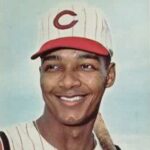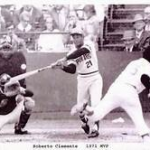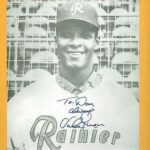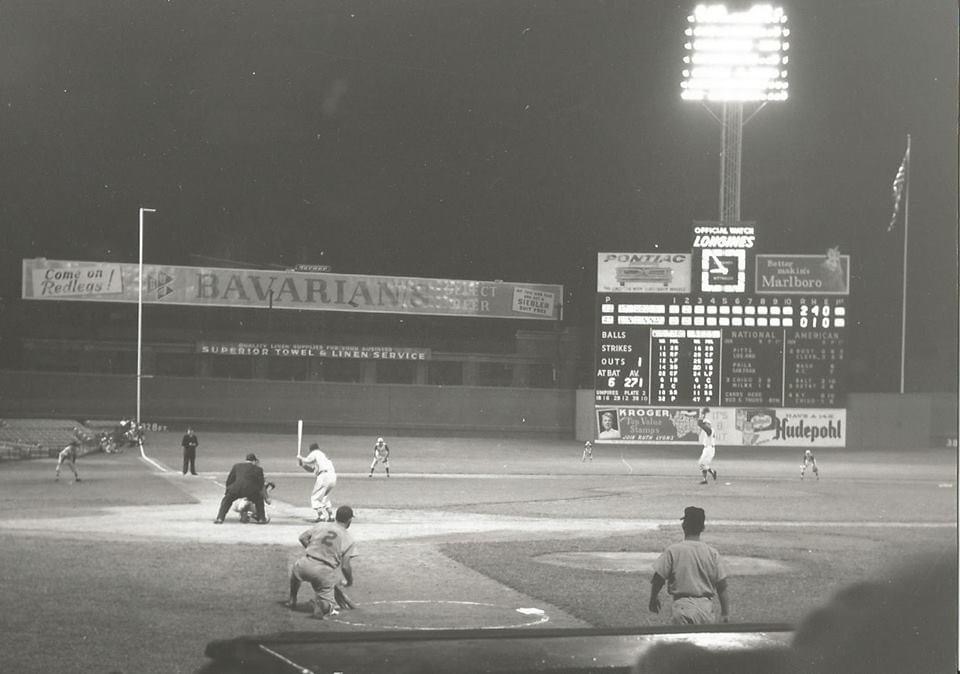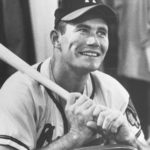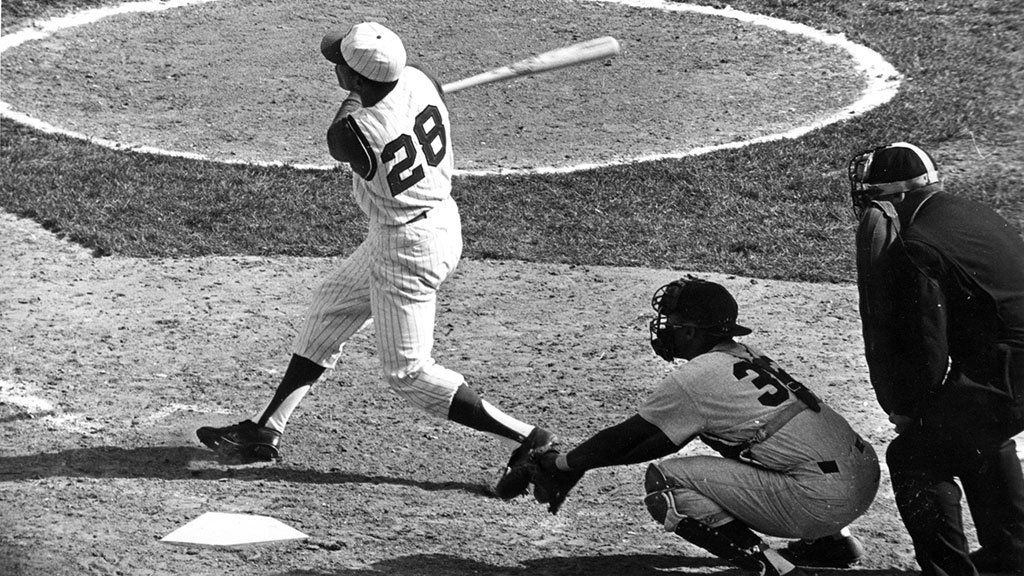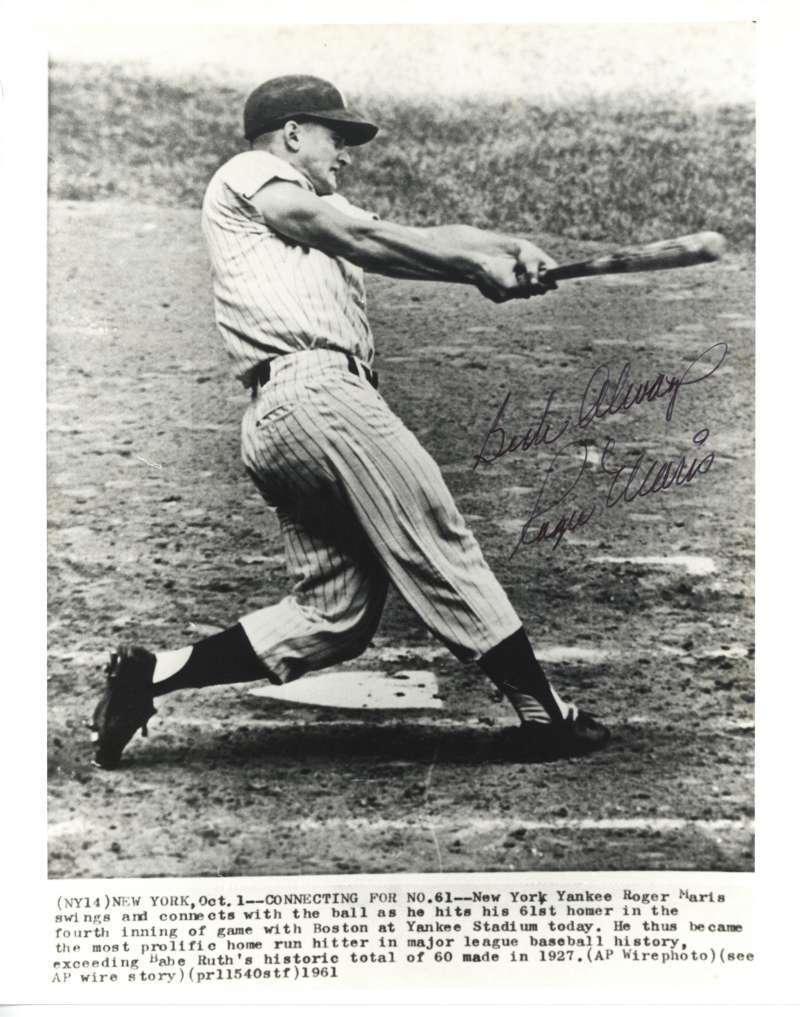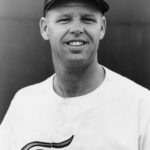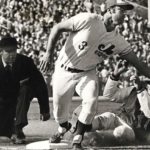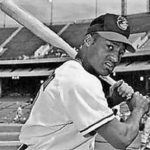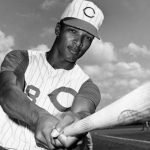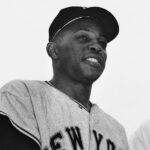Vada Pinson Stats & Facts
VINTAGE BASEBALL MEMORABILIA
Vada Pinson
Position: Outfielder
Bats: Left • Throws: Left
5-11, 170lb (180cm, 77kg)
Born: August 11, 1938 in Memphis, TN us
Died: October 21, 1995 in Oakland, CA
Buried: Rolling Hills Memorial Park, Richmond, CA
High School: McClymonds HS (Oakland, CA)
Debut: April 15, 1958 (11,518th in major league history)
vs. PHI 5 AB, 1 H, 0 HR, 0 RBI, 0 SB
Last Game: September 28, 1975
vs. TEX 1 AB, 0 H, 0 HR, 0 RBI, 0 SB
Full Name: Vada Edward Pinson
Pronunciation: \VAY-duh PIN-sun\
View Player Info from the B-R Bullpen
View Player Bio from the SABR BioProject
Nine Other Players Who Debuted in 1958
Vada Pinson
Ron Fairly
Tony Taylor
Orlando Cepeda
Norm Cash
Felipe Alou
Mudcat Grant
Frank Howard
Jerry Adair
The Vada Pinson Teammate Team
C: Johnny Edwards
1B: Tony Perez
2B: Pete Rose
3B: George Brett
SS: Leo Cardenas
LF: Wally Post
CF: Amos Otis
RF: Frank Robinson
DH: Lee May
SP: Jim Maloney
SP: Jim O’Toole
SP: Bob Gibson
SP: Sam McDowell
RP: Clay Carroll
M: Fred Hutchinson
Notable Events and Chronology for Vada Pinson Career
Vada Pinson Biography
Largely forgotten today, Vada Pinson was a five-tool player who seemed destined for the Hall of Fame at the age of twenty. While he was in Cincinnati he remained on track, but several teams later he was a journeyman outfielder who missed out on his chance for immortality. He retired less than 250 hits shy of the 3,000 hit mark.
“Vada Pinson caught my eye immediately, because he was just a great ballplayer and it was obvious just from the way he moved.” – Darcy Fast in the book The Missing Cub, describing Pinson in the minors
Biography:
inson received a $4,000 bonus to sign with the Reds out of McClymonds High School in Oakland. Cincinnati had signed Frank Robinson and Curt Flood out of the same school a couple years earlier. Pinson quickly convinced the Reds he was ready for the majors by assaulting California League and PCL pitching for a .357 average in 1957-58. He could do it all – hit for power and average, steal bases, get to a ball in the deepest reaches of the outfield, and fire a bullet back in.
Called up briefly in 1958, he hit a grand slam in his second game. The next year he led the NL in runs (131) and doubles (47), ranked fourth in batting (.316), belted 20 home runs and collected 205 hits. Because he had totaled 96 at-bats the season before (just six more than the minimum needed to gain rookie status), however, he was ineligible for Rookie of the Year consideration.
Pinson played 18 seasons, from 1958 to 1975. He played in the 1961 World Series for the Reds, was a two-time All-Star, led the NL in hits, doubles, and triples twice, and retired with 2,757 hits. But his road to that hit level was spent trying to live up to the hype he had created in his first few full seasons in the major leagues.
At a time when Willie Mays, Hank Aaron, Roberto Clemente, and Frank Robinson were the standard bearers for National League outfielders, Pinson was compared favorably to them when he arrived on the scene in 1958-1959. Though he often tried too hard to pull the ball and hit the longball, which made his average suffer, Pinson was a threat at the plate as well as the base paths. Five times he posted twenty homers and steals in the same season.
Early in his career he batted near the top of the lineup, but later he moved to #3 and drove in 100 runs on two occasions. Despite the low batting averages of the 1960s, in which Pinson played most of his career, he posted a .286 lifetime mark. He was tremendously durable, playing in every one of his teams games his first five full seasons. He appeared in 150 games or more every year from 1959 to 1967.
As a member of the Reds, Pinson encountered the bigotry that still existed in baseball despite Jackie Robinson’s integration more than a decade earlier. The white players on the Reds refused to mingle with the black players, and Robinson and Pinson became the leaders of the minority group who later adopted outcast Pete Rose.
Pinson had a knack for dramatic milestone hits. His 1,000th and 2,000th major league hits were home runs. In 1963 he collected his 1,000th off Milwaukee’s Claude Raymond. The previous day he had collected his 999th safety – an inside-the-park homer. In 1969, with the Cardinals, he collected hit #2,000 off Pittsburgh’s Joe Gibbon.
Pinson was traded to the St. Louis Cardinals after the 1968 season for Bobby Tolan and Wayne Granger. He did not have a great season with the Cards, who did not perform as well in 1969 as they had in the pennant-winning 1968 season, and Pinson was traded to the Cleveland Indians for Jose Cardenal after that year.
His first year in Cleveland in 1970 was decent enough (24 home runs and a .286 average), but when he fell off in 1971, he was traded to the California Angels in a deal for Alex Johnson. After a couple of years with the Angels, he finished off his career with the Kansas City Royals, still playing a lot of games on a team that featured the young George Brett.
The Hall of Fame:
The argument for Pinson as a Hall of Famer rested primarily on his 2,757 career hits. While 3,000 hits makes a player a shoe-in for the Hall, some thought that 2,757 ought to be close enough. He also had 485 career doubles, and most (but not all) players with 500 doubles are in the Hall. However, he never won an MVP award (finishing in the top 5 only once), and he finished with 1,366 runs scored (while 1,500 is a typical Hall of Fame total).
Around the time of his death, there was a concerted effort to get Pinson into the Hall, but the effort failed. Pinson, although he did not get in, will be remembered as one of the top players of the 1960s – a player who came close to achieving Hall of Fame status.
After his playing career ended, Pinson was a longtime big league coach. He was a member of the expansion Seattle Mariners staff from 1977 to 1980 before joining the Chicago White Sox in 1981. In 1982, he rejoined the Mariners and stuck with the club for two seasons. He was a Detroit Tigers coach from 1985 to 1991. Pinson ended his coaching career with another expansion team, the Florida Marlins, in 1993 and 1994.
There are two Hall of Famers on the list of the ten most similar players as of September 2007: Roberto Clemente and Zack Wheat.
Bad Timing:
Pinson had poor timing. In 1959 as a rookie he had a tremendous season but the Rookie of the Year award went to Willie McCovey, who appeared in less than half as many games.Pinson left the Reds following the 1968 season, missing out on the Big Red Machine years of the 1970s. He arrived in St. Louis in 1969, one season after the Cardinals played in their third World Series in five years. And Pinson retired in 1975 with the Royals, a year before Kansas City began a stretch of post-season appearances in six years.
@ET-DC@eyJkeW5hbWljIjp0cnVlLCJjb250ZW50IjoicG9zdF90YWdzIiwic2V0dGluZ3MiOnsiYmVmb3JlIjoiTGVhcm4gTW9yZSBhYm91dCB0aGUgdGVhbXMsIHBsYXllcnMsIGJhbGwgcGFya3MgYW5kIGV2ZW50cyB0aGF0IGhhcHBlbmVkIG9uIHRoaXMgZGF0ZSBpbiBoaXN0b3J5IC0gLSAtIC0gLSAtIC0gIiwiYWZ0ZXIiOiIiLCJsaW5rX3RvX3Rlcm1fcGFnZSI6Im9uIiwic2VwYXJhdG9yIjoiIHwgIiwiY2F0ZWdvcnlfdHlwZSI6InBvc3RfdGFnIn19@
Factoids, Quotes, Strange Things
Played For
Cincinnati Reds (1958-1968)
St. Louis Cardinals (1969)
Cleveland Indians (1970-1971)
California Angels (1972-1973)
Kansas City Royals (1974-1975)
Similar: Cesar Cedeno, Amos Otis, Carlos Beltran
Linked: Frank Robinson
Best Season, 1963
Still in the prime of his career, Pinson led the NL with 204 hits and 14 triples. He batted .313 with 22 homers and 106 RBI, as he know hit third in front of Frank Robinson. Add in 37 doubles, 96 runs, 27 steals, and a .514 slugging mark, and you have a very good season all the way around. He was also one of the 3-4 best defensive outfielders in the league.
Awards and Honors
1961 NL Gold Glove
All-Star Selections
Post-Season Appearances
1961 World Series
Description
Pinson played 18 seasons, from 1958 to 1975. He played in the 1961 World Series for the Reds, was a two-time All-Star, led the NL in hits, doubles, and triples twice, and retired with 2,757 hits. But his road to that hit level was spent trying to live up to the hype he had created in his first few full seasons in the major leagues.
At a time when Willie Mays, Hank Aaron, Roberto Clemente, and Frank Robinson were the standard-bearers for National League outfielders, Pinson was compared favorably to them when he arrived on the scene in 1958-1959. Though he often tried too hard to pull the ball and hit the longball, which made his average suffer, Pinson was a threat at the plate as well as the base paths. Five times he posted twenty homers and steals in the same season.
Early in his career, he batted near the top of the lineup, but later he moved to #3 and drove in 100 runs on two occasions. Despite the low batting averages of the 1960s, in which Pinson played most of his career, he posted a .286 lifetime mark. He was tremendously durable, playing in every one of his team’s games his first five full seasons. He appeared in 150 games or more every year from 1959 to 1967.
As a member of the Reds, Pinson encountered the bigotry that still existed in baseball despite Jackie Robinson’s integration more than a decade earlier. The white players on the Reds refused to mingle with the black players, and Robinson and Pinson became the leaders of the minority group who later adopted outcast Pete Rose.
Pinson had a knack for dramatic milestone hits. His 1,000th and 2,000th major league hits were home runs. In 1963 he collected his 1,000th off Milwaukee’s Claude Raymond. The previous day he had collected his 999th safety – an inside-the-park homer. In 1969, with the Cardinals, he collected hit #2,000 off Pittsburgh’s Joe Gibbon.
Pinson had poor timing. In 1959 as a rookie he had a tremendous season but the Rookie of the Year award went to Willie McCovey, who appeared in less than half as many games. Pinson left the Reds following the 1968 season, missing out on the Big Red Machine years of the 1970s. He arrived in St. Louis in 1969, one season after the Cardinals played in their third World Series in five years. And Pinson retired in 1975 with the Royals, a year before Kansas City began a stretch of post-season appearances in six years.
Hitting Streaks
31 games (1965)
31 games (1965)
27 games (1965)
27 games (1965)
22 games (1969)
22 games (1969)
All-Star Selections
1959 NL
1960 NL


